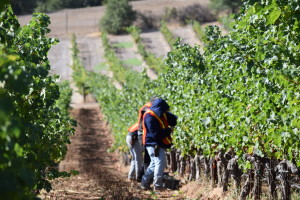When people hear Pinot Noir….chances are good that Sonoma County comes to mind. But…
 Do you know what grape varietals are most widely grown in Sonoma?
Do you know what grape varietals are most widely grown in Sonoma?
Since the popularity of the movie Sideways, it is a well known fact that many wine lovers flock to California wine tasting rooms to enjoy a glass of Pinot.
 Sonoma County has been quickly developing into a mecca for Pinot Noir, including many small batch and new family owned producers. There are many varietals grown here but a few types of grapes that stand out from the rest, Pinot Noir included.
Sonoma County has been quickly developing into a mecca for Pinot Noir, including many small batch and new family owned producers. There are many varietals grown here but a few types of grapes that stand out from the rest, Pinot Noir included.
The temperature changes from night to day are part of what makes this area so perfect for some grape growing farmers.
Sonoma County is home to more than 450 wineries each specializing in a variety of wines. Maritime fog from Sonoma County’s coast blankets many of the vineyards, preserving the acidity and complexity in the wine. Those diurnal temperatures are what some grapes love most.
Although, only 6% of Sonoma County is planted to vineyard, it is truly a wine mecca in it’s own right.
 Chardonnay is the most abundant varietal in Sonoma County, with over 17,000 vineyard acres planted.
Chardonnay is the most abundant varietal in Sonoma County, with over 17,000 vineyard acres planted.
More Pinot Noir is planted in Sonoma County than any other red grape at over 12,700 acres with Cabernet Sauvignon close behind at 12,400 acres.
Sauvignon Blanc is the second most planted white grape in Sonoma County at 2700 acres. Zinfandel is another variety that is widely grown in some areas.
DID YOU KNOW??
Sonoma County is one of California’s largest producers of wine grapes, far outproducing the Napa Valley AVA
For the best Pinot Noirs in the world, visit Sonoma County wineries in the Russian River Valley, Carneros and Sonoma Coast appellations. Cabernet Sauvignon is king in Sonoma County’s warmer regions of Alexander Valley and Knights Valley. Sonoma County’s Chardonnay and Pinot Noir thrive in its cool regions, while Cabernet Sauvignon and Zinfandel flourish in warmer sites.
 Sonoma County’s 16 American Viticulture Areas (AVAs) reflect the wide variety of climate and soil conditions in the County. 16 different regions in one County shows the true diversity offered in this wine mecca.
Sonoma County’s 16 American Viticulture Areas (AVAs) reflect the wide variety of climate and soil conditions in the County. 16 different regions in one County shows the true diversity offered in this wine mecca.
Many wineries are able to offer a variety of bottles and grape blends to consumers all coming from the local vineyards of Sonoma.
Wines produced from a Sonoma County region must include “Sonoma County” on the label, so look for it next time you are shopping for your next bottle or choosing a wine from a restaurant list. I know I ALWAYS look for Sonoma wine wherever I go.
Grapes were planted at Fort Ross as early as 1812. Perhaps a vintage Sonoma bottle is on your wish list?!
**Clinks


I really enjoyed the article it helped educate me more to the region. Thank you for sharing.
S
Thanks for the kind words Stephen, CHeers to you & yours